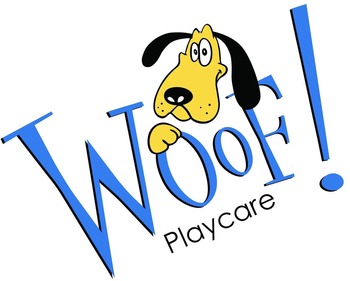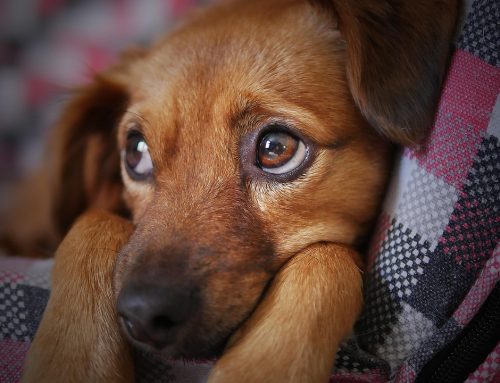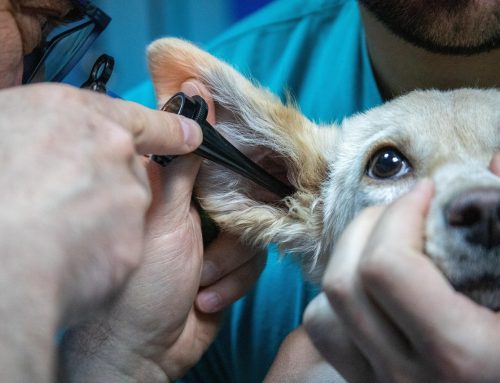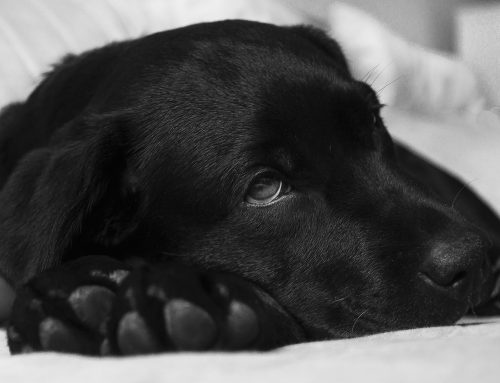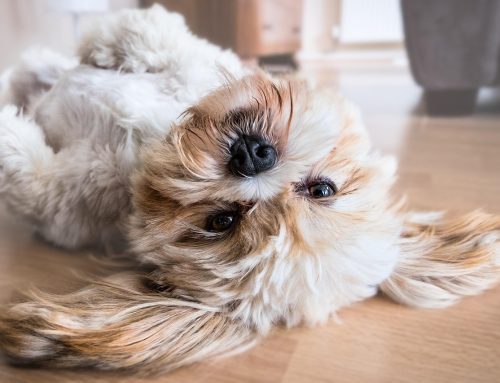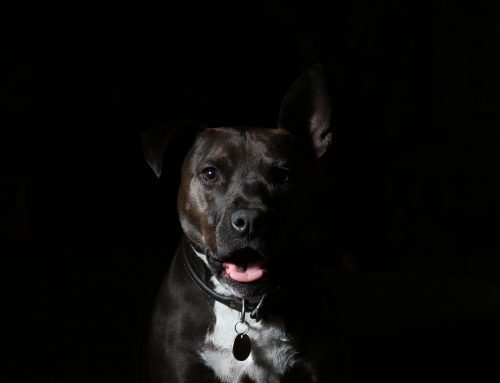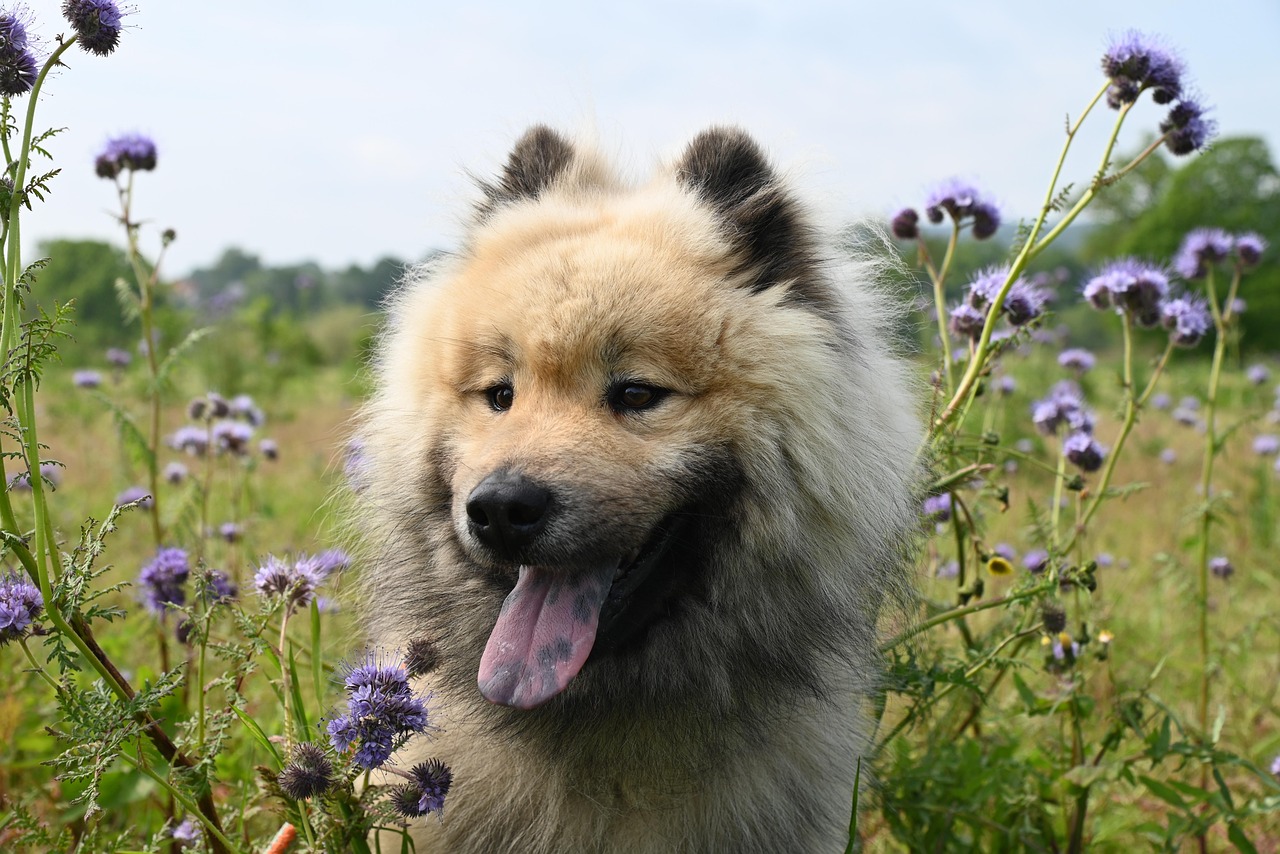
Understanding Excessive Dog Panting: Causes, Warning Signs, and What to Do
Panting is a normal behavior in dogs—it’s how they cool down and regulate body temperature. But when your dog is panting excessively or without a clear reason, it can be a sign of something more serious. Below, we’ll explore common causes of panting, when to be concerned, and how you can help your dog if it seems like something’s not right.
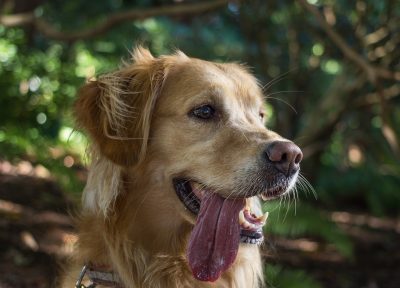
Common Causes of Excessive Panting in Dogs
Pain
Panting is one of the ways dogs express pain. Even if there’s no obvious injury, your dog may pant due to internal discomfort, joint pain, or illness. You might also notice restlessness, whining, or a change in behavior. If your dog pants heavily at rest, especially alongside other unusual behaviors, it’s worth checking in with your vet. Pain-related panting can come on suddenly or develop over time.
Cushing’s Disease
This hormonal disorder causes the overproduction of cortisol, a stress hormone. Dogs with Cushing’s may pant constantly, seem thirsty all the time, and develop a pot-bellied appearance. It’s more common in older dogs and often mistaken for normal aging. If your dog is showing these signs, a blood test can help diagnose the condition. Treatment can greatly reduce the symptoms, including panting.
Heart Disease
Panting is a common symptom of heart issues in dogs, especially when paired with coughing or difficulty exercising. A failing heart can’t efficiently circulate oxygen-rich blood, leading to rapid breathing or panting. Dogs with heart disease may also be lethargic or collapse after exertion. If your dog pants often without exercise, heart issues could be the cause. Early detection is key to managing the condition.
Heatstroke
Heatstroke is a medical emergency that happens when a dog’s body overheats. Heavy, rapid panting, drooling, vomiting, and weakness are warning signs. Without quick cooling and veterinary care, heatstroke can be fatal. Avoid walking your dog in hot weather and never leave them in a parked car. If you suspect heatstroke, move your dog to a cool area and contact your vet immediately. If you’ve ever come indoors after a warm day and noticed your dog panting a lot it could be more than just the warmth. If your dog is panting a lot they could be dealing with heat stroke. Some symptoms of a dog with heat stroke are excessive drooling, vomiting, weakness, collapsing in addition to heavy panting. Its very important that if you dog has heatstroke to not douse them in water. If you lower their body temperature too quickly it can create more of an issue. Room temperature water, blowing a fan on the dog, or bringing them indoors if not already is a good start. If your dog is running a fever of 105 degrees Fahrenheit then that should be treated as an emergency and they need to see a veterinarian. Pay attention to the onset of your dogs panting to determine the cause and how you can help.
Anxiety
Panting is a common sign of anxiety in dogs. Loud noises, separation, or unfamiliar environments can cause stress-induced panting. This is usually paired with pacing, hiding, or whining. Try calming your dog with a safe space, gentle reassurance, or anxiety aids recommended by your vet. Long-term anxiety may benefit from behavior training or medication.
Respiratory Disease
Conditions like pneumonia, bronchitis, or a collapsing trachea make it harder for dogs to breathe normally. As a result, they may pant more to try to get enough oxygen. You might also notice coughing or wheezing. These issues can become serious quickly and should be evaluated by a vet. Treatments vary depending on the specific respiratory disease.
Obesity
Overweight dogs tend to pant more because extra body fat puts pressure on their lungs and heart. Even minor activity can lead to heavy panting. Weight loss through diet and light exercise can significantly improve breathing and overall health. Talk to your vet about a safe weight-loss plan. Reducing obesity lowers the risk of many panting-related health issues.
Exercise
Panting after running or playing is completely normal. It helps your dog cool down and regulate body temperature. However, if the panting doesn’t slow down after a few minutes of rest, it could indicate a problem. Always monitor your dog’s recovery time. Excessive post-exercise panting may point to an underlying health issue.
Obstructive Lung Disease
Conditions that block airflow, such as chronic bronchitis or tumors, force dogs to pant to maintain oxygen intake. The breathing may sound harsh or wheezy. These conditions are serious and often progressive. A veterinary exam with imaging and lab work is needed to diagnose the problem. Treatment may include medications or oxygen therapy.
Anemia
Anemic dogs have fewer red blood cells, so their bodies receive less oxygen. Panting helps compensate for this lack. Additional signs include pale gums, weakness, or rapid heartbeat. Anemia can be caused by internal bleeding, parasites, or chronic disease. A blood test can confirm the diagnosis and guide treatment.
Laryngeal Paralysis
This condition affects the vocal cords, making it hard for air to pass through the throat. Dogs with laryngeal paralysis often pant loudly and struggle during exercise or heat. It’s most common in older large-breed dogs. In severe cases, surgery may be needed to improve airflow. Keeping your dog cool and calm helps reduce symptoms.
Psychomotor Agitation
Some dogs experience episodes of overstimulation, often due to neurological conditions. These dogs may pant, pace, or act hyperactive for no apparent reason. It can be difficult to distinguish from anxiety or behavioral issues. A vet or canine behaviorist can help evaluate your dog’s behavior. Medication or environmental changes may help manage this condition.
Medication
Certain medications like corticosteroids or pain relievers can cause panting as a side effect. If your dog begins panting more after starting a new drug, consult your vet. Do not stop the medication without professional advice. Your vet may adjust the dosage or recommend an alternative. Always follow prescription instructions carefully.
Poisoning
If your dog ingests a toxic substance, panting may be one of the first signs. Other symptoms include vomiting, drooling, shaking, or collapse. Common toxins include chocolate, xylitol, grapes, medications, and household cleaners. This is a veterinary emergency. Call your vet or a poison control hotline immediately.
Allergies
Allergic reactions, particularly those affecting the respiratory system, can lead to panting. Swelling, itching, or difficulty breathing may also occur. Severe reactions (anaphylaxis) require immediate medical attention. Antihistamines or allergy testing may help manage chronic allergies. Watch for environmental triggers like pollen, dust, or certain foods.
Brachycephalic Syndrome
Flat-faced breeds like Bulldogs, Pugs, and Shih Tzus often have breathing issues due to narrow nostrils and long soft palates. These dogs pant more, even in mild weather or after minimal activity. Keeping them cool and avoiding strenuous exercise helps reduce risk. In severe cases, surgery may improve airflow. Always monitor flat-faced dogs for signs of distress. If you have a dog that falls into the brachycephalic category, then you might notice that your dog pants more than others. This is due to a couple of reasons, the first being brachycephalic dogs will pant more due to their anatomy. Brachycephalic or smush faced dogs will often have a more challenging time breathing due to the way their airways are formed so they may pant more due to that. OF course, exercise will exacerbate their panting as with any dog. Being mindful to the physical activity your brachycephalic dog is getting will be helpful in minimizing their excessive panting.
Cooling-Off
Panting is your dog’s natural cooling method. Unlike humans, dogs don’t sweat through their skin. Instead, they evaporate moisture through their tongue and respiratory tract. After playing or being outside, a few minutes of panting is normal. Make sure your dog has access to water and shade to help them cool off.
Environmental Factors
High temperatures, humidity, or poor ventilation can make your dog overheat. Panting helps them adjust, but prolonged exposure can lead to heat exhaustion. Always ensure your dog has a comfortable, cool space indoors. Avoid walking on hot pavement or during peak sun hours. Even indoor dogs can overheat in stuffy environments.
Respiratory Tract Infection (Kennel Cough)
Infections like kennel cough or canine flu affect the lungs and airways, making breathing harder. Your dog may also cough, sneeze, or seem lethargic. Panting helps them compensate for reduced airflow. These infections are often contagious, especially in boarding or daycare settings. Veterinary care and rest are key to recovery. Kennel cough may be the culprit if you find yourself asking why your dog is panting so much. Kennel cough is an upper respiratory infection that dogs can get after coming into contact with the virus. Dogs typically get kennel cough after being congregated with many other dogs. There are kennel cough vaccines, and they are highly recommended and sometimes required especially if you will be boarding your dog at a facility.
Heat Exhaustion
Less severe than heatstroke but still dangerous, heat exhaustion causes heavy panting, drooling, and weakness. Immediate cooling is essential—use fans, cool towels, and water. Avoid extreme cold methods like ice baths, which can shock your dog. Provide hydration and monitor for worsening symptoms. If signs persist, call your vet.
Asthma
Dogs with asthma experience inflammation in their airways, leading to panting and wheezing. Triggers may include allergens, smoke, or cold air. You might notice labored breathing or coughing. Asthma should be diagnosed and managed by a veterinarian. Inhalers or medications may be prescribed depending on severity.
Breed
Some breeds are more prone to panting due to their physical characteristics. Short-nosed breeds, thick-coated dogs, and large breeds may pant more often or more heavily. Understanding your dog’s breed can help you know what’s normal for them. Always keep an eye out for changes in their regular behavior. What’s typical for one dog might be concerning in another.
Canine Cognitive Disorder (Dog Dementia)
Older dogs can develop dementia, which may cause confusion and unusual behaviors like nighttime panting. These dogs may seem disoriented or restless. Routine and a calm environment can help ease symptoms. Medication and supplements may also support brain health. Talk to your vet about a care plan for senior dogs.
Chronic Illnesses
Long-term diseases like diabetes, kidney failure, or cancer can cause ongoing discomfort and stress, leading to frequent panting. These conditions may also affect metabolism, organ function, or blood flow. Monitoring for other symptoms can help with early diagnosis. Chronic illness often requires ongoing veterinary management. Consistent care can greatly improve your dog’s comfort.
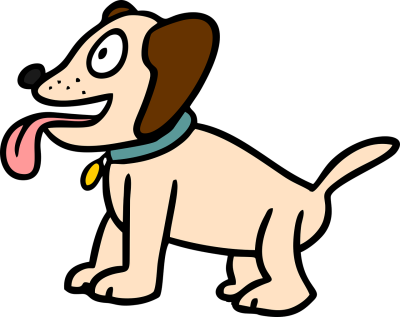
How Dogs Regulate Body Temperature
Dogs pant to cool down since they can’t sweat like humans. By evaporating moisture from their tongue and respiratory tract, they release excess heat. This helps them stay safe in warm weather or after exercise. Panting is completely normal during and after exertion. However, abnormal or constant panting requires attention.
Which Property of Water Helps Dogs Cool Down?
The high heat of vaporization of water allows dogs to cool through panting. As water evaporates from their tongue and mouth, it takes heat with it, lowering their body temperature. This is why hydration is so important—dry mouths can’t cool efficiently. Always provide fresh water, especially in warm weather. It’s a key part of healthy panting and temperature control.
How Much Panting Is Too Much?
Mild, short-term panting after play or on warm days is expected. But panting at rest, during sleep, or for long periods may be abnormal. Loud, labored, or fast panting should always be taken seriously. If your dog pants for no reason, observe closely for other symptoms. When in doubt, consult your veterinarian.
When Should I Worry About Dog Panting?
You should worry if your dog is panting heavily at rest, for long periods, or in cool environments. Warning signs include pale gums, vomiting, collapse, or confusion. Loud or labored panting can indicate heart, respiratory, or neurological problems. If something seems “off” with your dog, don’t ignore it. Early intervention can make a big difference.
What to Do if Your Dog Is Panting for No Reason?
First, ensure your dog isn’t too hot or stressed. Provide water and move them to a quiet, cool place. Look for other symptoms like lethargy, restlessness, or unusual behavior. If panting continues or seems out of place, contact your vet. It’s better to be cautious when unexplained panting occurs.
Does Dog Panting Mean Pain?
Panting can be a symptom of pain, especially when unrelated to exercise or temperature. Dogs often pant when dealing with injury, arthritis, or internal discomfort. They may also show other subtle signs like hiding, restlessness, or a lowered appetite. If your dog is panting and acting differently, pain could be the cause. A veterinary exam can help pinpoint the problem.
What Can I Give My Dog for Panting?
Never give human medications unless directed by your vet. If your dog is panting due to anxiety, your vet might recommend calming supplements or anti-anxiety meds. For pain-related panting, only use vet-prescribed treatments. Cooling techniques like fans and fresh water can help in hot weather. Always talk to your veterinarian before offering any remedies.
Dog Panting is Natural and Healthy
Panting is a natural and healthy way for dogs to cool themselves and manage their body temperature. If your dog is panting more than usual or for no obvious reason, it could point to an underlying issue. If your dog’s panting is sudden, severe, or accompanied by symptoms like weakness, vomiting, pale gums, or collapse, contact your veterinarian immediately—these could be signs of a medical emergency.
